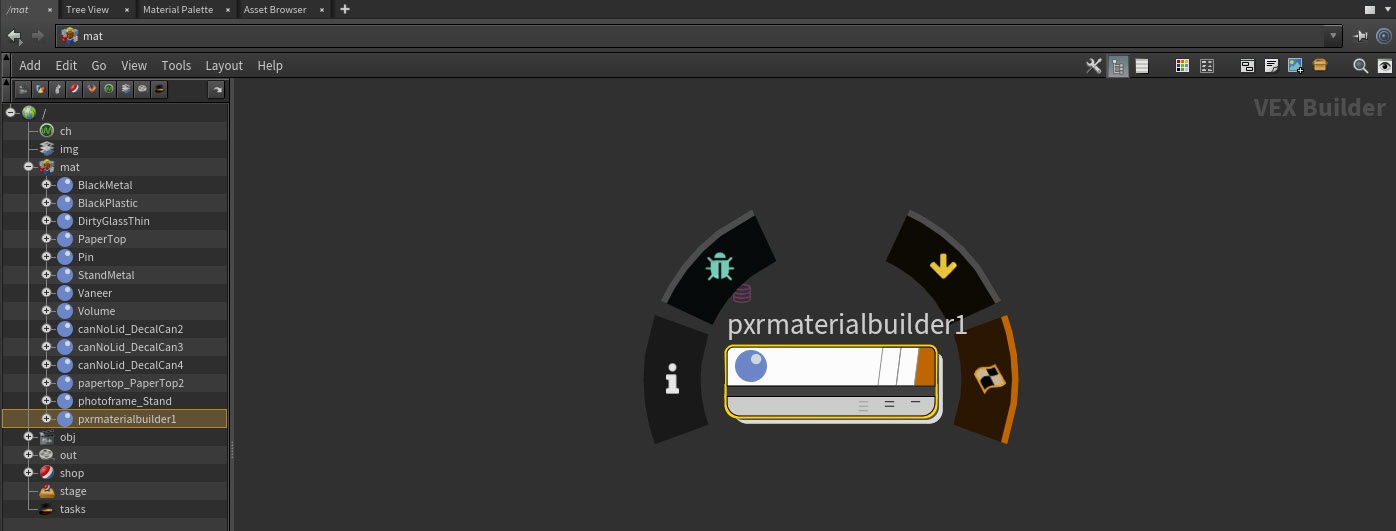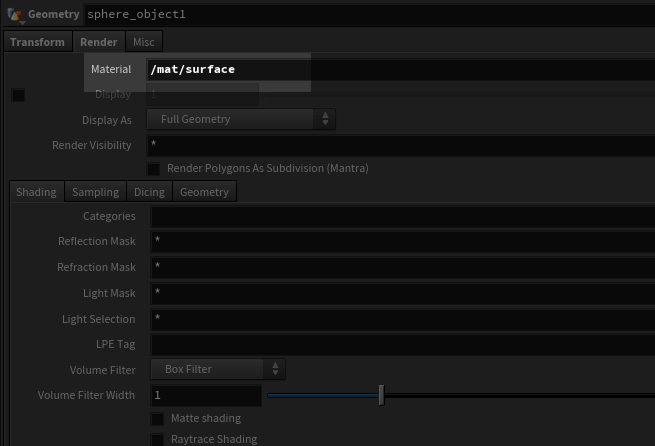Contents
Note that different versions of Houdini have different workflows, please be sure and follow the directions for your version.
Adding Light
To add a light, select one of light tools from the RenderMan Shelf or the RenderMan Menu which automatically creates a Pxr light OBJ. See Lighting for more information.
Adding Material
To add a material, we need to first create a shading Network. Note that RIS material is not a SHOP but it is a VOP inside an RIS Network.
A PxrMaterialBuilder is just a container for RIS VOPs. It is required for Houdini to work with RIS materials. Important: A material is represented by a PxrMaterialBuilder VOP with a BxDF output_collect VOP input. To add a material, you can add a PxrSurface from the RenderMan Shelf, which automatically creates the nodes, or select another BxDF from the RenderMan Menu to wire into the output_collect VOP inside of a PxrMaterialBuilder. These tools also automatically create an RIS Network if it does not exist as well as the selected VOP.
Assigning Material
To assign the material to your object, simply drag the PxrMaterialBuilder VOP you just created to the Material parameter of your object.
Render
To render, add a RenderMan ROP from the RenderMan Shelf. This tool also creates a RIS Network and sets the integrator to PxrPathTracer. Make sure the Camera parameter is set to the render camera (you must create one in Houdini as the default cannot be used), then press the Render button to see your render interactively in the Image Tool. See Rendering for more information.


